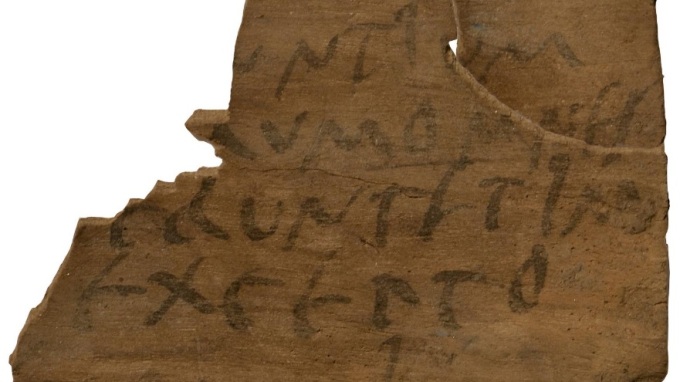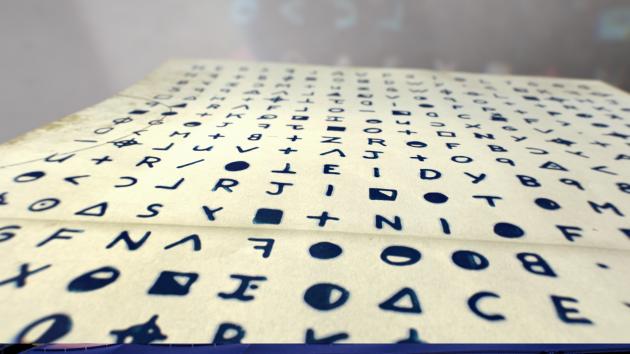The last of the CREWS monographs has finally appeared in print: Pippa’s book, Exploring Writing Systems and Practices in the Bronze Age Aegean. You can read it free online with open access – follow the link below.




The last of the CREWS monographs has finally appeared in print: Pippa’s book, Exploring Writing Systems and Practices in the Bronze Age Aegean. You can read it free online with open access – follow the link below.

CREWS project research has had some unexpected outcomes, of which one of the most exciting has been the development of the Endangered Writing Network – hosted through the new VIEWS project HERE.

The idea is that our research on pre-modern writing traditions has some value for the modern world, where thousands of languages are in danger of being lost, and long with them many cultural traditions including writing systems. There are also many minority and endangered languages that do not have an established written form of their own. Since writing has a unique ability to support language use, by giving the language a visual presence and making it possible to produce educational materials and literature, it is vital that we tackle the issue of writing vitality head on.
Continue reading “The Endangered Writing Network”The CREWS project may have officially finished, but I hope its legacy lives on in our publications (not to mention the resources still hosted on the website). After a bit of delay because of the pandemic, reviews of CREWS volumes have recently started to emerge, which is very helpful in trying to understand the impact and ongoing usefulness of CREWS research. The two reviews I know of are the following:
Continue reading “CREWS volume reviews”We are grateful to CORDIS for developing a new feature on the results of the CREWS project, which finished last September – but I hope has a long legacy to come. Read the article by clicking below.
Unravelling the relationships between early writing systems
And to find out more about what follows CREWS, please do have a look at the VIEWS project website!
Today is the last day of the CREWS project. We started in April 2016, and over the last six years it has been an absolute pleasure to work with my amazing team and all the colleagues who have taken part in the project through the visiting fellowship scheme, conferences and seminars. I’m blown away by their generosity and all that amazing intellectual stimulation – the project has developed in so many exciting ways from those initial ideas I first put down on paper seven years ago.

It may be the last formal day of the project, but this isn’t really the end of CREWS! The website will remain active, with all the resources already housed there (including the blog posts, free teaching materials and our ‘write your name’ sheets). I’ll also keep the YouTube channel active. There will even be new content occasionally, because there are some CREWS publications still in progress – and don’t forget that you can access all the already-published outcomes for free through the website too.
Continue reading “Farewell CREWS (and hello VIEWS)”We are pleased to tell you that the CREWS project will be hosting one final seminar on its last day, Friday 30th September 2022 (at 3.00pm BST, by Zoom). All are welcome!
We will be joined by our long-distance Visiting Fellow Robert Martin of the University of Toronto, who is now working as archaeology co-ordinator for the Saugeen Ojibwe Nation. Sadly it turned out that Robert could not visit us in person in Cambridge, but he is nevertheless sharing his research with us and will give a paper on “A Late Bronze Age Early Alphabetic Inscription from Mycenae (Greece)”.

Hello, I am Olena Mudalige. I am a second-year PhD candidate at the Kharkiv State Academy of Design and Arts, studying Design. I previously completed a master’s degree studying art criticism and graphic practices and have qualified as an art critic and lecturer. I have come to the UK under the ‘Homes for Ukraine’ programme after leaving Ukraine on February 24 2022 and have become affiliated with the CREWS project through the European Research Area for Ukraine (ERA4Ukraine), https://euraxess.ec.europa.eu/ukraine scheme. I’m currently interested in the origins and early forms of writing and in the history of study of writing in the ancient world. Today I want to write a bit about different graphical traditions in Roman writing.
The small number of surviving Latin inscriptions is explained by the fact that they were applied to marble only in the second half of the 1st C. BC. Prior to this, inscriptions were applied to tuff and limestone, which were prone to erosion from wind and rain. Inscriptions were erected on public buildings, triumphal arches, columns, tombstones. They were a reflection of the cultural aspects of the history of Roman society and a means of public and solemn representation of the Roman Empire in a vast territory from the British Isles to Egypt, from Gibraltar to the deep regions of Asia.
The widespread use of writing in ancient Rome, the high percentage of the population which was literate, the growth of libraries, the opening of enterprises for correspondence and distribution of books, public readings – all this contributed to the development of the art of beautiful writing and the emergence of the profession of ‘font master’.
Continue reading “Fonts in the Epigraphic and Manuscript traditions of Roman Antiquity: Guest post by Olena Mudalige”Pippa is one of the interviewees on tonight’s episode of Cracking the Code on the History Channel – it’s all about the decipherment of Linear B!
See HERE for more information.

Also available with Curiosity Stream.
I’m doing a charity walk to celebrate the 1,900th anniversary of Hadrian’s Wall, so during September I’ll be trying to walk 84 miles – the length of the Wall – but without actually visiting (which also nicely avoids treading on all that archaeology). So what better excuse for a post on writing and literacy in this northern outpost of the Roman world?
First a note on my charity walk, and then on to the inscriptions! This is quite special to me because I grew up visiting Hadrian’s Wall frequently but haven’t been back since 2011 (how is that over ten years ago?!). So I’ve got my pedometer and I’ve measured my steps so that I can tell how far I’ve gotten each day, and even if it’s a challenge (because of some ongoing medical issues and not getting much of a chance to go walking) I’m determined to keep going. Partly that’s because I’m doing it for a charity I really believe in, Classics For All, who aim to bring teaching on the ancient world to a much wider proportion of schoolchildren than currently have access to it. You can find out more by clicking below, and if you feel inclined to donate I know it will be much appreciated by me and by all the amazing people working for Classics For All.
READ MORE (AND CONSIDER DONATING!) HERE

Hello, I am Claudia Posani and I am very glad to write an article for the CREWS blog. I am interested in Hittitology, with a particular focus on Syro-Anatolian Iron Age history and on hieroglyphic Luwian inscriptions.
I spent two months as a Visiting Fellow with the CREWS project. During May and June 2022, I worked on multilingual inscriptions of the so-called Neo-Hittite states (around 11th-8th centuries BC). These inscriptions include bilingual and also trilingual texts written on different supports, such as statues, steles and orthostats. They belong to the textual category of “royal inscriptions”, namely they express the voice of kings or rulers who speak in first person in the texts narrating their enterprises.
The main feature of these documents consists of offering the same text written in two or more languages. The texts I was dealing with were written in Hieroglyphic Luwian, Phoenician, Aramaic and Assyrian. These different languages (Luwian belonging to the Indo-European, the other to the Semitic language family) were written adopting different writing systems. Consequently, we can read on the same support the same text written in hieroglyphic script, cuneiform characters and alphabetic signs.
Multilingualism in Syro-Anatolian states is certainly connected to the historical background of these polities, which were strongly characterised by mutual contacts and cultural hybridity. Nevertheless, one point captured my interest: could textual multilingualism/multiscriptalism be connected to royal propaganda and to the intention of presenting a specific image of the king?
Continue reading “Multilingual Syro-Anatolian Iron Age inscriptions – my research as a CREWS Project Visiting Fellow: Guest post by Claudia Posani”